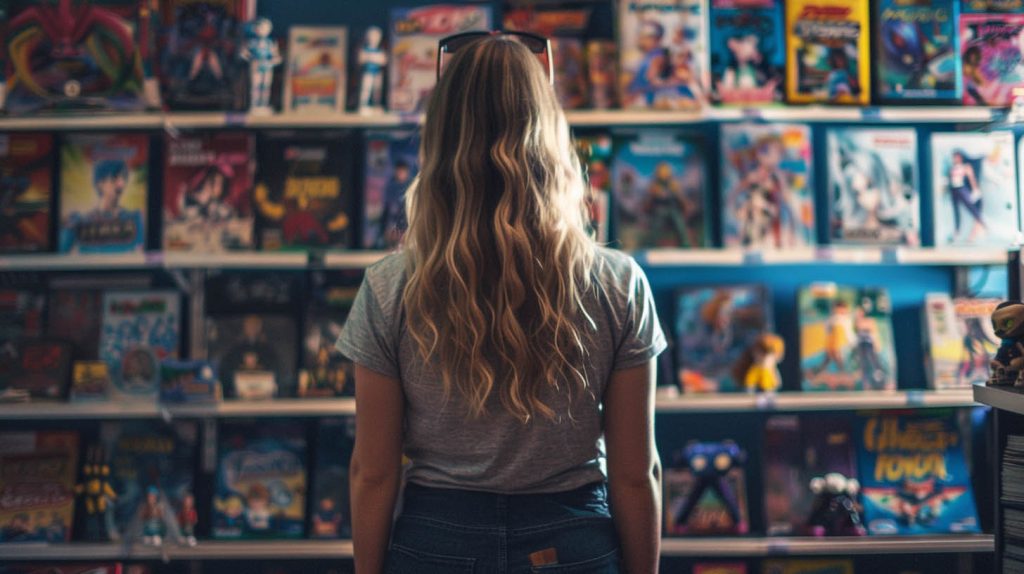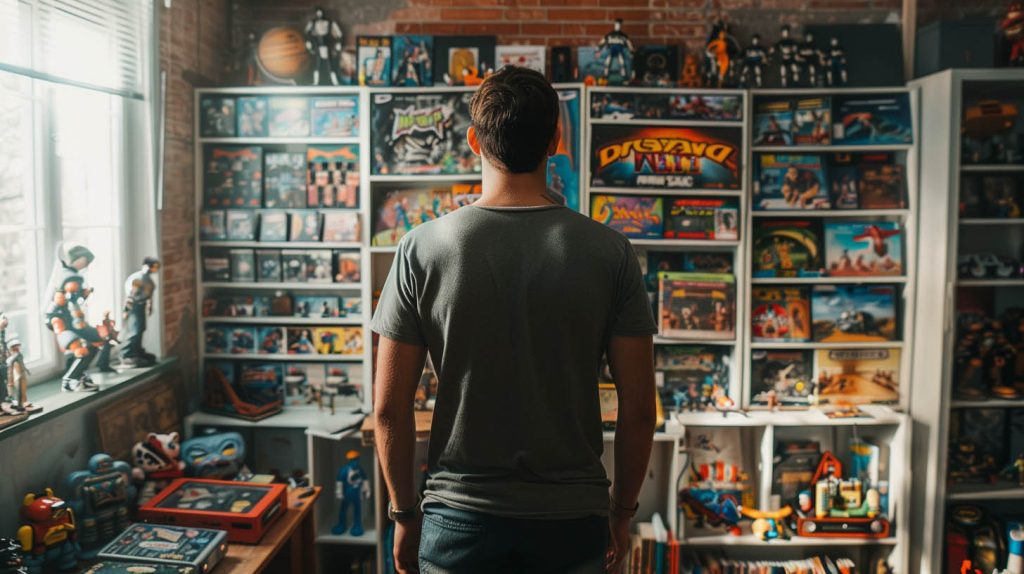When you buy through our links, we may earn a commission. Learn more.
Understanding Vintage Toy Collectibles
Vintage toys hold a special place in the hearts of collectors and hobbyists. They represent more than just playthings; they are tangible pieces of history, often tied to our childhoods. We will explore the history, rarity, and key brands that make these collectibles valuable.
History and Evolution of Vintage Toys
The world of vintage toys began in the early 20th century. Companies like Marx and Mattel emerged, producing iconic items that became staples of play.
- 1930s-1940s: The introduction of tin toys, such as wind-up cars and trains, sparked interest in collectibles.
- 1950s-1960s: This era saw the birth of action figures and dolls, including the famous Barbie doll.
- 1970s-1980s: We witnessed the rise of electronic toys and video games, marking a shift in play patterns.
Many of these toys remain highly coveted by enthusiasts today, as they signify significant cultural moments and innovations in play.
Defining Rarity and Value in Vintage Toys
Understanding rarity is crucial for any collector. Several factors influence a toy’s value:
- Condition: Items in mint condition, especially those with original packaging, are worth significantly more.
- Rarity: Limited editions or unique toys, such as prototypes or handmade pieces, demand higher prices.
- Demand: Some toys, like vintage G.I. Joe or Hardy Boys collectibles, are sought after by many collectors.
To help assess value, collectors often refer to guides and auction results. For example, the Honus Wagner Baseball Card fetched millions, underlining the market’s potential.
Highlights of Major Toy Brands and Categories
Several brands have made lasting impacts in the vintage toy market:
- Tin Toys: Brands like Hubley produced beautifully crafted, colorful tin toys that remain popular collectibles.
- Action Figures: Mattel’s Barbie and Hasbro’s G.I. Joe are classic examples, appealing to both nostalgia and investment.
- Playables: Soft toys, like those from Barclay, offer a different kind of charm, focusing on tactile play.
In addition, accessories and figures from various series enhance the collectible experience, allowing us to build extensive displays rooted in our memories.
Acquiring and Trading Vintage Toy Treasures
When we consider acquiring and trading vintage toy treasures, various strategies can enhance our success. We should focus on knowing where to buy, how to evaluate items, and building connections within the toy collector community.
Strategies for Buying and Selling on Auction Platforms
We often turn to online auction platforms, such as eBay, for buying and selling vintage toys. These platforms allow us to access a wide range of collectibles, from action figures to plush toys.
To maximize our success:
- Research: We should study recent sales of similar items. This helps us understand fair prices.
- Timing: Listing toys during peak buying seasons, like holidays, can increase interest.
- Bidding Strategy: Setting a maximum bid limit prevents overspending. We can also watch auctions and place last-minute bids for better chances.
Notable vintage toys like vintage “Teenage Mutant Ninja Turtles” figures or “Star Wars” action figures often attract attention, so keeping an eye on these items can lead to potential finds.
Evaluating Condition and Authenticity
When acquiring vintage toys, it’s essential to evaluate their condition and authenticity. High-value toys like “My Little Pony” or “Barbie” often depend on their state for pricing.
Key factors to consider include:
- Packaging: Original packaging increases value. We should look for intact boxes, seals, and tags.
- Wear and Tear: Examine for scratches, discoloration, or missing parts. Items that are near mint condition fetch higher prices.
- Authentication: Certifications can verify a toy’s authenticity. We should look for markings from reputable brands like Hasbro, Bandai, or Kenner.
Fakes are common, especially with popular lines like “Transformers” and “G.I. Joe,” so it’s crucial to know the details that set originals apart.
Building a Network of Collectors and Sellers
Networking with other collectors and sellers enriches our experience and knowledge. Joining communities, both online and offline, enables us to share insights about different toys from generations past.
Ways to connect include:
- Social Media: Platforms like Facebook and Instagram have groups dedicated to vintage toys. We can participate in discussions, trade insights, and trade items.
- Toy Conventions: Attending conventions allows face-to-face networking. We can meet seasoned collectors and find current market trends.
- Local Toy Stores: Establishing relationships with local stores can lead to exclusive sales and opportunities.
Cultivating these connections not only aids in acquiring rare toys but also enhances our understanding of the vintage toy market.
I’m Cartez Augustus, a content creator based in Houston, Texas. I’ve been exploring a variety of niches in content marketing in order to increase website traffic. I enjoy experimenting with artificial intelligence, search engine optimization, and paid search. The process of creating nerd-related content has been extremely rewarding since it has enabled me to network with people who are knowledgeable about these subjects.

